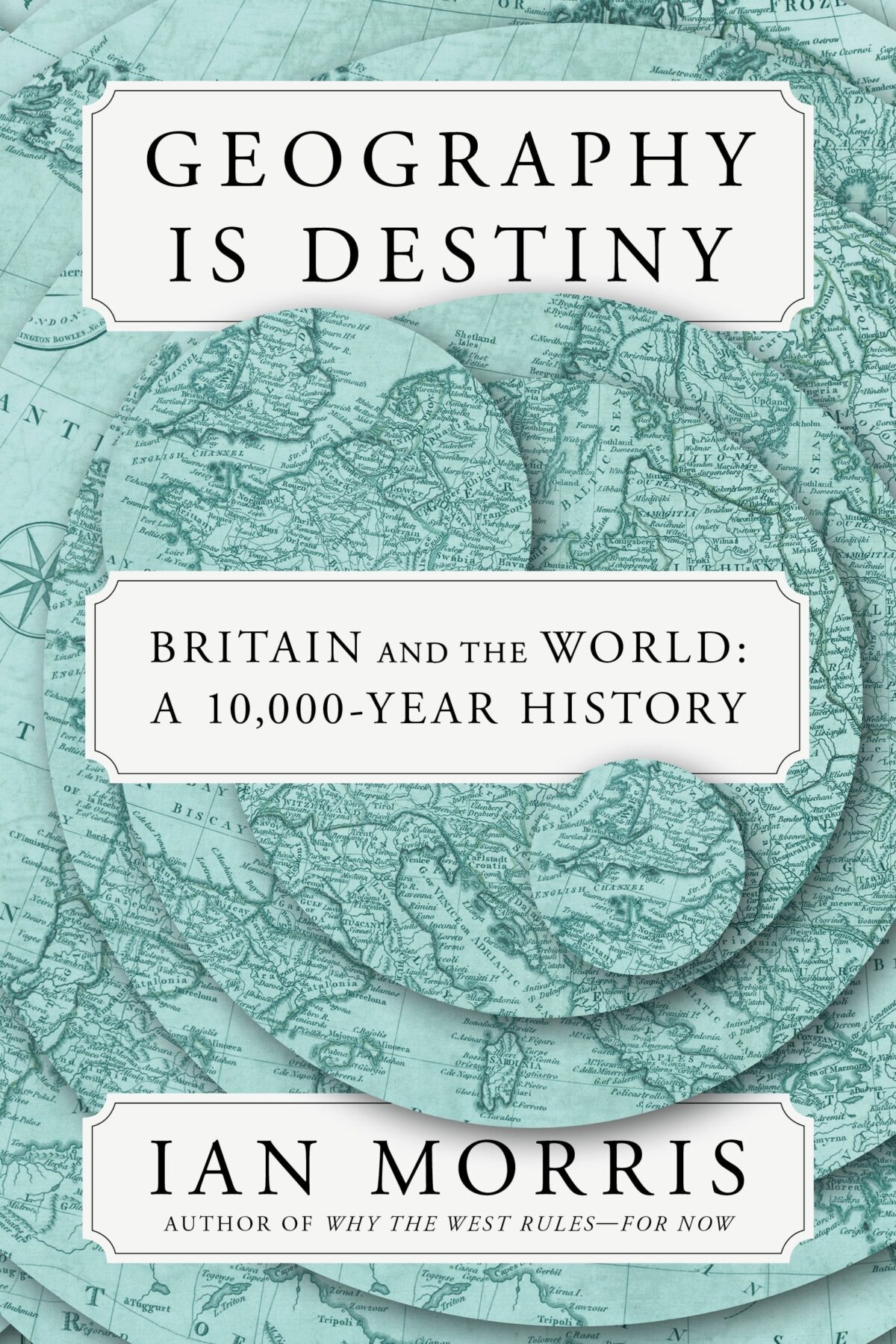Morris, Ian. Geography is Destiny: Britain and the World: A 10,000-Year History. New York: Farrar, Straus, and Giroux, 2022.
Anyone familiar with my feelings on the inevitable in history can likely guess how I might react to a book entitled Geography is Destiny. You’d be half-right; while I find the concept of ‘destiny’ distasteful for serious academics, I do recognize that where geography, biology, climate, or other big picture factors are concerned, human agency must necessarily be placed within a spectrum of possibility and impossibility. Thus, as I picked up Ian Morris’s study of Britain from prehistory to Brexit, I was more inclined to listen to what I hoped would be a sober discussion of how Britain’s unique geography, both within the isles and in relation to Europe and the globe, affected its “10,000-year history.” Morris delivered exactly what he promised, yet in some ways, not quite in the ways I had expected.
Though admittedly late to the game, Morris initially frames his work as another of the myriad books spawned in the wake of Brexit attempting to explain this inflection point in 21st-century British history. Unlike those other, mostly current event, books, however, Morris takes an (extremely) long view of his subject matter, using the entirety of British history from its first hominid settlement to the present to test what he calls Thatcher’s Law: the principle expressed by Prime Minister Margaret Thatcher that Britain will always be a part of Europe, whether she likes it or not. For the most part, Morris bears this conclusion out, conclusively demonstrating how Britain’s own geography influenced both the location of its wealthiest, most powerful polities (in the temperate, fertile southeast) and the spread of developments back and forth between the isles and the continent. All the while, themes of security, mobility, prosperity, sovereignty, and identity serve to orient readers and demonstrate the choices, implicit or explicit, that historical peoples were presented with as their lives changed around them. Morris is at his best when describing the distant, prehistoric and ancient past in vivid detail through the archaeological excavations that have illuminated it, and his assertion that much of modern, exceptionalist British identity is actually based on an aberration in Thatcher’s Law when, in the 18th and 19th century, technology converged to allow the Royal Navy to transform the English Channel from an international highway into a moat defensive, is an excellent reframing of the history of the isles in the long duree.
And yet, while Morris certainly frames his narrative in terms of geography, I would contest that his work is more concerned with issues of grand strategy than of anything else. This is in part somewhat unavoidable; once the geographic factors and constraints of Britain are discussed, it would feel redundant to continue bringing them back up across hundreds of pages. What this means, however, is that once the reader reaches the early modern era, the themes of identity, mobility, and even prosperity and sovereignty become not much more than buzzwords as Morris focuses in on the geographic influence on English security. This can lead to unique conclusions that might not be obvious otherwise, such as the importance of controlling Scotland and Ireland to Britain’s ability to expand overseas or the role of the Hundred Years War not simply in dynastic politics but in securing both coasts of the English Channel. Yet as a work of “big history,” Morris also explores these avenues of inquiry from so high up that the details of the actors on the ground are often overlooked. Niceties of particular political institutions are ignored or simplified to the point of being almost incorrect and, more importantly, Morris never conclusively demonstrates that his subjects were acting in accordance with these geographic principles or if such an alignment was a happy (or unhappy) accident. Once the organizational development of government arrives during the Iron Age, it is almost as if human decisions or developments, from the abolition of slavery to the advent of full democracy, scarcely matter at all.
As I first began reading Geography is Destiny, I thought it might be a core text if ever I were to put together a syllabus for a collegiate British history course. That feeling still stands, but I feel compelled to move it down to supplementary. If one already knows something about Britain, Morris’s work can be a fascinating reappraisal that will likely influence your conception of the subject for years to come. If one is a newcomer, however, much fundamental knowledge of the isles is missing or distorted by Morris’s big history lens. It remains well worth the read–just make sure to consume in concert with other material that can make up for its deficiencies.
